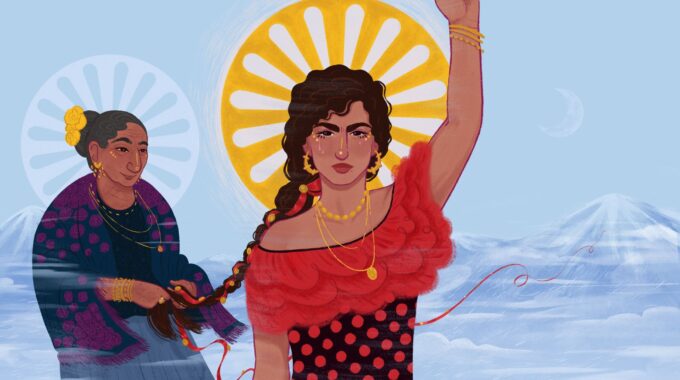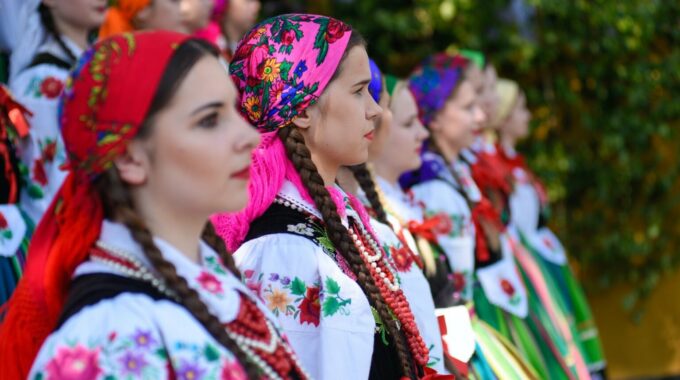
Roma Culture and Stereotypes
The article titled “Roma Culture and Stereotypes” is a continuation of the contributions in our series of articles in collaboration between Futureg and PDCS as part of the “Digital Activism” project. The goal of this project is to provide valuable insights and promote greater tolerance and understanding towards the Roma and Hungarian minorities in Slovakia.
This article, authored by Viktória Valachová, a graduate of the Faculty of International Relations, and Katarína Csikosová, a doctoral student at the Faculty of Philosophy, Department of Religious Studies, focuses on stereotypes and their impact on society. Specifically, it explores how Roma culture is portrayed in the media and literature.
Stereotypes are pervasive elements in our society and do not spare the Roma population. While the word “stereotype” does not always carry a negative connotation, it is essential to recognize that it represents an unverified assumption rather than an accurate and truthful representation of an entire group. Stereotypes are ingrained ideas or patterns that people use to justify their positive or negative attitudes. They often lead to the belief that a particular group of people shares the same characteristics, ignoring individual differences. Creating stereotypes frequently results in inequalities and biased assessments of others. Instead of recognizing individuals as unique personalities with their own qualities, people become surrounded by stereotypes. These preconceptions can be challenging to change, as individuals are categorized based on these stereotypes, leading to specific behavioral patterns.
Overall, it is evident that the spread of negative prejudices and stereotypes about Roma has often been used to justify segregation and disciplinary approaches that divide society between Roma and non-Roma. These biases and attitudes were supported by the belief that Roma lacked interest, for example, in education, which led to the establishment of separate schools for Roma and the non-Roma population. For instance, stereotypes about inadequate hygiene might have been utilized to limit social interactions, hinder friendships, or prevent marriages between Roma and non-Roma groups.
Stereotypes exist in various forms and manifestations, sometimes even within literature. Literature is often considered a mirror of society, reflecting its attitudes, values, and prejudices. Authors in a free environment can create any characters, consciously or unconsciously influenced by stereotypes, imbuing them with traits that are supposed to be characteristic of a particular group of people. For instance, let’s critically examine Victor Hugo’s renowned literary work, The Hunchback of Notre-Dame (known as Notre-Dame de Paris in French). In this novel, we can observe how Roma stereotypes manifest in literature. Hugo does not shy away from portraying Roma stereotypes. The character of Esmeralda serves as a typical example of the romanticized image of Roma in literature. Her beauty, dancing abilities, and mysterious origin make her an exotic and captivating figure for readers. However, Hugo also delves into her inner world and the human qualities of her community, attempting to transcend the boundaries of stereotypes. Although this portrayal leans toward a positive stereotype, there is no evidence to suggest that Roma inherently possess greater predispositions for playing musical instruments, singing, or dancing. Traditional music is an integral part of Roma culture, but every musician, regardless of their background, must work hard to achieve success. Beyond music and dance, Roma culture encompasses many other aspects, which you can explore further here. It is essential to recognize that individuals in disadvantaged groups often must work much harder to achieve success. These individuals may face challenges related to social or economic backgrounds and may be surrounded by prejudices, as seen with Roma, Muslims, people with disabilities, and others.
Unfortunately, these stereotypes have also permeated the media, contributing to the perpetuation of negative stereotypes about Roma. In this way, prejudices and limited perspectives about the Roma ethnic group are reinforced and maintained. It is crucial for the media to present the diversity of the Roma community, their contributions, and their culture, thereby helping to dispel negative biases. According to an analysis conducted by the civic association Romano Kher – Rómsky dom in collaboration with the Newton Media agency, some media outlets play a role in shaping stereotypical images of Roma. According to this analysis, in the eyes of the non-Roma population, Roma are depicted as “uneducated, impoverished, having many children, reliant on state aid, and more prone to criminal behavior than members of the majority population”.
Stereotypes have a full range of consequences. While some can be relatively benign, many are extremely harmful. Unfortunately, these stereotypes have also infiltrated the media, contributing to the perpetuation of negative stereotypes about Roma. One well-known stereotype present in the media portrays Roma as child abductors. Supporting this assumption has led to cases in Greece and Ireland where Roma families had their own children taken away because they did not appear dark enough, automatically assuming they were kidnapped. The children were eventually returned to their families after DNA tests confirmed their familial ties. This incident illustrates how stereotypes can influence an individual’s judgment and ultimately harm both the family and the traumatized community.
Certainly, there are many media outlets that strive for an objective portrayal of Roma and contribute to debunking negative prejudices. For instance, Romano fórum is an online magazine founded by the eduRoma civic association in 2021. Its goal is to provide quality news, stories, interviews, and commentary to rectify the often-distorted public image of Roma and other minorities. It aims to be a voice for these communities in important matters and a primary source of information. Roma Press Agency (RPA) is an independent agency that also focuses on informing about Roma topics and culture. Their news coverage aims to present the diversity of the Roma community and combat stereotypes. Romano hangos is an internet portal providing news in the Roma language. Organizations like Romano Kher and Etpos educate journalists about Roma issues and fight against discrimination. These efforts are crucial, even if they are not always in the spotlight.
In most European countries, intolerance toward the Roma community remains prevalent. The most common stereotypes include the belief that Roma are unwilling to work in jobs and that they destroy the facilities provided to them. Additionally, there is a perception that Roma spends their social benefits on entertainment rather than essential necessities. It is essential to recognize that these stereotypes may not align with reality and can contribute to discrimination, violence, and a negative image of Roma. These stereotypes are rooted in both conscious and unconscious anti-Roma attitudes, harming the mental and economic well-being of community members and affecting interactions with the non-Roma society.
The most frequently discussed topic concerning the Roma community is the social welfare allowance and its association with large Roma families. In Slovakia, it is often claimed that Roma families exploit this system by having many children to receive benefits. However, the number of children does not significantly impact the amount of the allowance. For instance, in 2024, the allowance for families with more than 4 children is only €76.80 higher than the allowance for families with fewer than 4 children. A similar pattern has been observed in previous years.
In conclusion, it is essential to highlight autostereotypes, where Roma individuals internalize stereotypes perpetuated about them. They may describe themselves (or other Roma) as “disorderly, lacking perseverance, or neglecting their children.” Such self-perception can lead to underachievement in activities associated with these stereotypes—for instance, the belief that “there’s no point in learning because education isn’t in our blood.” However, Roma’s lack of education is not solely due to autostereotypes; it also results from the often-inadequate environment that fails to embrace them (economic disparities among peers, unfamiliarity with customs, language, and culture, etc.). It is crucial to recognize that these stereotypes are not accurate, and every individual possesses unique abilities and potential. Therefore, dismantling stereotypes and understanding one another—despite our diverse backgrounds—can lead to greater collective achievements.


Sources:
tematicke_zistovanie_-_stereotypy_a_postoje_voci_romom_v_lokalnej_politike.pdf (gov.sk)
Kniha: Jekatyerina Dunajeva, 2021 Published by: Central European University Press
Nazov : Constructing Identities over Time: “Bad Gypsies” and “Good Roma” in Russia and Hungary
Dávka v hmotnej núdzi – MPSVR SR (gov.sk)
Romano Kher – Rómsky Dom – Tlačová správa: Médiá zobrazujú Rómov stereotypne a často anonymne
https://www.sme.sk/c/5936755/4-obraz-romov-stereotypy-media-a-obraz-buducnosti.html
Psychologička: Na Slovensku prevažuje názor, že je v poriadku mať predsudky k Rómom (dennikn.sk)
Two Blond Children Taken From Roma Families In Ireland Are Returned : The Two-Way : NPR



